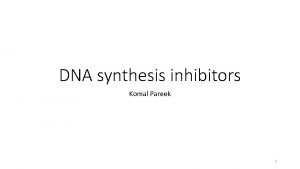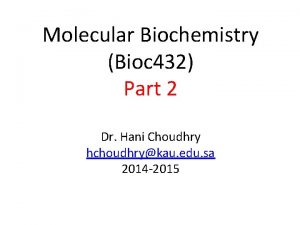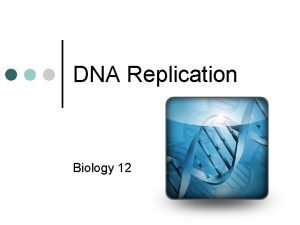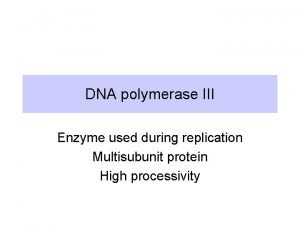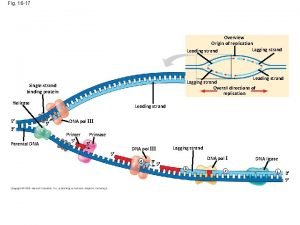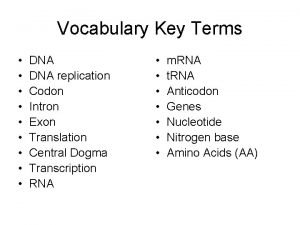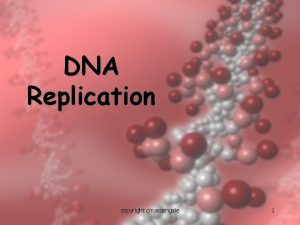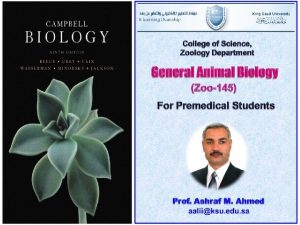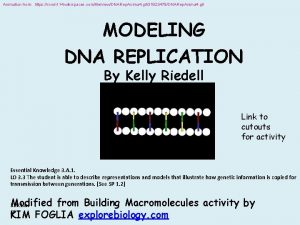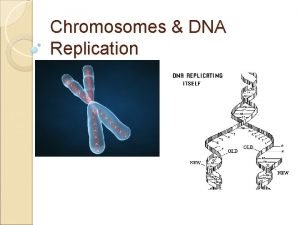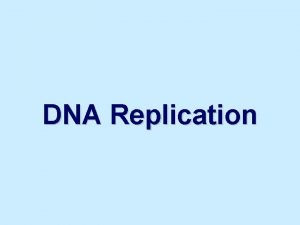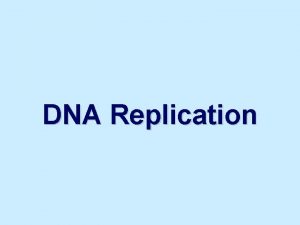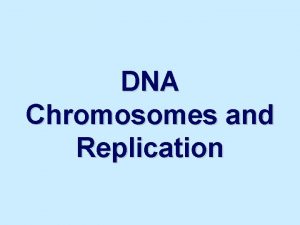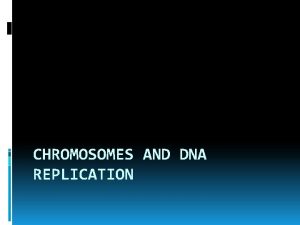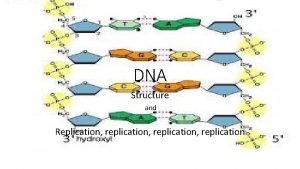Chromosomes DNA Replication I DNA Chromosomes A DNA













- Slides: 13

Chromosomes & DNA Replication

I. DNA & Chromosomes • A. DNA is found in different ways depending on the type of cell you are looking at – 1. In prokaryotic cells DNA is located in the cytoplasm in a single circular molecule known as a chromosome – 2. In eukaryotic cells the DNA is located in the nucleus in the form of many chromosomes • B. DNA must be folded into at least 1/100 of its full length to fit in any type of prokaryotic cell

II. Chromosome Structure • A. In eukaryotic cells DNA has to be folded even further in order to do this chromosomes use the help of proteins. (only unwind during replication) – 1. Histones – proteins that have tightly wound DNA around them creating chromatin. • B. Together histones and DNA form a structure known as nucleosome, which gets further coiled into loops. – 1. Only during mitosis are these fibers drawn together forming the tightly packed chromosomes. Which may help separate chromosomes during mitosis

III. DNA Replication • A. Each strand of the DNA double helix has the information to reconstruct the other half by base pairing. • Purposed by Watson & Crick proven by Meselson & Stahl (bacteria experiment) – 1. Since each strand can be used to make the other the strand are said to be complimentary. • B. In prokaryotic cells replication occurs at one point and proceeds in 2 directions until the entire chromosome is replicated • C. In eukaryotic cells replication occurs in many points known as replication forks until each chromosome is completely copied



IV. Eukaryotic DNA Replication • A. DNA Replication – DNA molecule separates into 2 strands, then produces 2 new complimentary strands following the rules of base pairing. Each strand of the double helix serves as a template. • B. The 2 new DNA molecules each have one old strand one new strand (semiconservative replication) • C. In order for replication to occur DNA helicase “unzips” the DNA so that DNA polymerase can join the new nucleotides and proofreads to ensure correct base pairing


IV. Eukaryotic DNA Replication • D. Replication begins at special sites called origins of replication, strands of DNA separate form replication bubbles (end point replication fork). • E. Once helicase unzips the DNA and binding proteins hold the strands apart DNA polymerase begins to catalyze the antiparallel elongation (i. e. add nucleotides) in the 5’ to 3’ direction


IV. Eukaryotic DNA Replication • F. Both strands are built in the 5’ to 3’ direction. – 1. One strand is built toward the replication fork and is never broken this is called the leading strand. – 2. The other strand the lagging strand forms away from the replication fork in a series of segments called Okazaki fragments. These segments are then put together by DNA ligase. • G. Topoisomerases are enzymes that will then cut, swivel & rejoin the helix.


V. Protecting Our Code • A. Each time DNA replicates, some nucleotides from the ends of the chromosomes are lost. To protect against possible gene lost eukaryotes have special nonsense nucleotide sequences (TTAGG) at the ends of the chromosomes that repeat thousands of times. These ends are called telomeres (maintained by telomerase)
 Bioflix activity dna replication nucleotide pairing
Bioflix activity dna replication nucleotide pairing Replication
Replication Dna and genes chapter 11
Dna and genes chapter 11 Dna replication
Dna replication 5 enzymes responsible for dna replication
5 enzymes responsible for dna replication Dna replication
Dna replication Summary of dna replication
Summary of dna replication Dna replication fork
Dna replication fork Accgtat
Accgtat Dna replication
Dna replication Dna replication facts
Dna replication facts Dna replication pearson
Dna replication pearson Haploid vs diploid
Haploid vs diploid Kim foglia dna replication
Kim foglia dna replication



